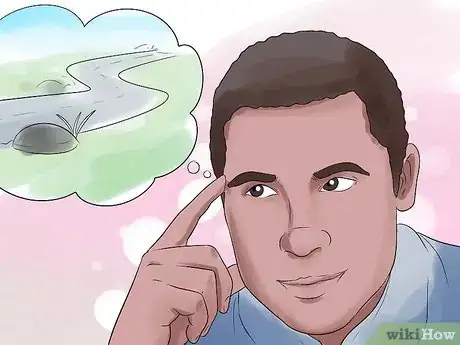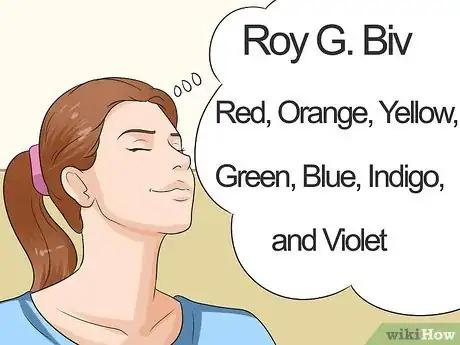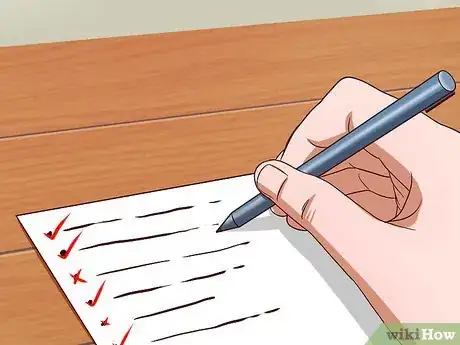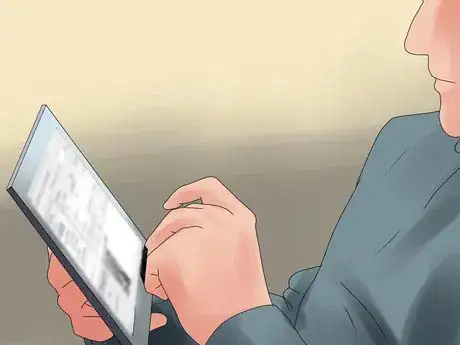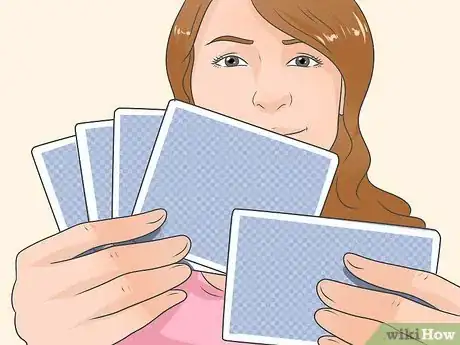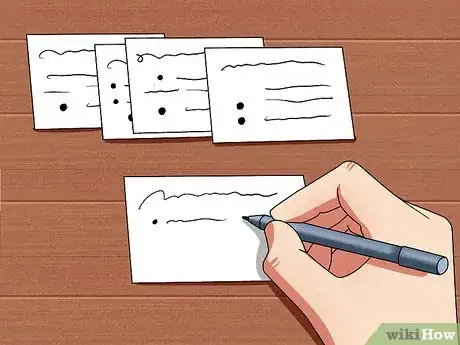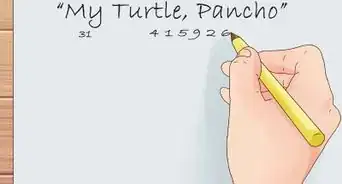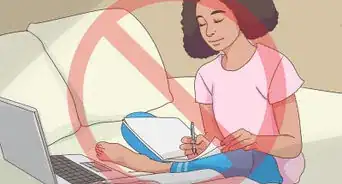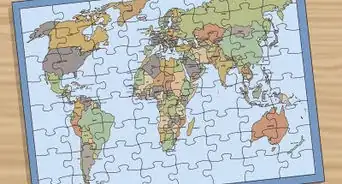This article was co-authored by Bryce Warwick, JD. Bryce Warwick is currently the President of Warwick Strategies, an organization based in the San Francisco Bay Area offering premium, personalized private tutoring for the GMAT, LSAT and GRE. Bryce has a JD from the George Washington University Law School.
There are 12 references cited in this article, which can be found at the bottom of the page.
This article has been viewed 43,295 times.
Memory can be a fickle thing. Sometimes we remember the smallest details of moments that we'd rather forget, and we struggle to recall the most important things. If you take the time to understand how your memory works, you can use these natural tendencies to remember more things, more easily.
Steps
Consciously Creating Memories
-
1Be mindful about creating memories. It is easy to forget things when you don't take the time to engage with them – when your mind is already slipping off of the surface of the memory, and leaping to the next thing. Take a moment to breathe. Be exactly where you are. If you make this moment a significant and conscious act of storing a memory, you may find it much easier to recall the memory later.
- Listen. If you meet someone and she tells you her name: take a moment to fully engage with this person. You still might not remember everything, but it should be easier to link the name with a face if you are absolutely present when you store the memory.[1]
- If you want to remember where you left an object: take a moment to be aware of where you are leaving it. If you're setting your keys down, visualize the keys as they rest on the wood grain of the table, surrounded by books, and cups, and other things. Capture the image in your mind so that you can recall it later.
-
2Engage your visual memory. It can be hard to remember everything that you hear, especially when you hear multiple pieces of information at once. Memory is a primarily visual function. If you link new information to things that you can see and imagine, you may find it much easier to recall the "linked" memories.[2]
- If you meet four new people, and they all introduce themselves to you at once, try linking each name to one major physical characteristic of each person. For instance, Bill might have a large bill on his baseball cap, and Sandra might have light, sandy hair.
Advertisement -
3Use your imagination. If you are leaving something somewhere, imagine that it explodes, or grows, or comes to life as soon as you set it down. Picture every detail. Conjure a vivid mental image that links your memory of the object to a specific time and place. Try to make "memory spots" by linking your mental images to a room that you frequent, or to an object that you use every day.[3]
-
4Chunk information. It is well-documented that we remember things best when they are grouped with other things.[4] Try to put things into categories or chains. Break up large bits pieces of information into smaller bits of information.
- Try chunking verbal information into poetic sound and metrical structures – songs, or verses, or just simple rhymes. For thousands of years, humans passed down stories and information between spans of generations without any formal writing system. Rhyming is one way of chunking verbal information, but so are stanzas; paragraphs; and even sentences.[5]
- If you need to remember a long chain of numbers, break it up into smaller bits. For instance, remember 459012476390 as "459 012 476 390" or "4590 1247 6390." There is a reason that phone numbers, social security numbers, and other important chains of information are broken up into sections.
-
5Link information. When you learn something new, find a way to tie it into what you already know. Make it relevant to your life and your knowledge base. Try using mnemonics to create more mental connections around a given bit of information.[6] Come up with a handy acronym, or try to remember the new thing as a subset of something you already know.#*If you are trying to remember how to find a physical location, try to tie it into your existing mental map. Memorize each twist and turn that led you to the place. Link the spot in your mind to another place that you know.
Writing Things Down
-
1Write notes to yourself. Set down the details while they are fresh in your mind, and leave the note in a place where you'll see it again. Put notes on your fridge, or tape them to your mirror, or use a bulletin board in a prominent part of your home or office. Consider using a note-saving app on your phone or computer.
- If you need to remember an event, write the details on a small piece of paper or post-it note. Then, stick it on your fridge with a magnet. Include the date, the time, and the place.
- In a pinch, try texting or emailing yourself. Send a quick text to your own number: "Meeting with Peter: Wednesday at 2pm." Later, when you check your messages, you can move the note to a more visible location.
- Write in on your hand or your arm. If the note is particularly urgent, place it somewhere that you cannot ignore it.
-
2Make a list. If you need to remember a whole range of things, group them all together into a progression or a flowchart. Organize the items in an order and scheme that makes logical sense to you. Try listing things in order of when they need to be done. Try ranking tasks by their importance, or by their relevance to your goals for a given day. Check off items on the list as you complete them.
- Make day-to-day lists to keep yourself accountable. Write a shopping list before you go to the grocery store, or write a list of your goals at the beginning of each work day. Try making a list before you go to sleep each night: set your goals and intentions for the next day, and chart out when you'll complete each task.
-
3Keep an address book. Try writing addresses, phone numbers, birthdays, and other information into a physical or digital book so that you can recall them easily. You can even save much of this information to a person's "Contact" page in your phone or email account. Most apps and devices will automatically save your contact information for you. However, it might help you to store all of these various things in one place.
-
4Use a planner or calendar. If you have trouble remember appointments, plans, and important days, you can mark them ahead of time on a calendar. For day-to-day tasks, there are pre-made planners—essentially, productivity journals—with dates and times marked out on each page. You can chart your days, your tasks, your appointments, your assignments out in these pages. If you're diligent, you might dramatically reduce the amount of things that you miss.
- Try using a planner or task-setting app. There are various applications and websites that help you chart out your days, weeks, and months. Consider automating parts of your memory so that your devices remind you of important things.[7]
- Don't worry if the planner-or-calendar strategy doesn't appeal to you. This sort of rigorous planning isn't for everyone, and it certainly isn't the only way to remember things.
- You can buy a planner in most paper and office-supply stores. Consider using a planning app to integrate your intentions with your devices.
Memorizing
-
1Consider your learning style. Auditory learners retain information best when they hear it. Visual learners remember things that they see. Kinesthetic (tactile) learners often need to physically interact with things in order to understand them well. There are various other ways of breaking up the types of learning style. Think about which categories of information—and types of information—hold your attention best, and then build your learning strategy around those things.[8]
-
2Use flashcards. Write down each bit of information onto a separate post-it, index card, or other small sheet. Link each thing to a keyword: for instance, if you are studying anatomy, link the name of a body part to its definition and its function in the body. Then, test yourself. Read the keyword and try to recall the linked definition. Through repetition, cultivate these associations in your head until they are second nature.
- You can download a flashcard app for easy access. These programs will also save you the trouble of manually writing out each piece of information.
-
3Be persistent. If you're going to memorize a lot of information at once, you'll need to keep practicing until you've hammered it into your brain. Repetition makes for lasting memories.[9] Read over these things every day—even several times a day—until you can recall them on cue.[10]
- Try memorizing things in blocks. Read over a chunk of text or a short list of terms. Keep reading it and recalling it until you know it by heart. Then, move on to the next chunk – but return to earlier chunks at intervals.
- If you need to remember your locker combination, practice opening your lock over and over until you can do it without thinking. For a few days, open the lock five times in the morning and five times before you go to sleep. Make sure to supplement this method by writing the locker combination down somewhere safe!
Community Q&A
-
QuestionIf my teacher asks me to remember that an occasion is coming and of I forgot it, then how could I remember such things?
 How to kookooCommunity AnswerSimply open Google Calendar, or use a calendar app and write in the upcoming event, For example, if you're having a test, write it down on the app/website. You can also put a Post-It note on the fridge or dishwasher.
How to kookooCommunity AnswerSimply open Google Calendar, or use a calendar app and write in the upcoming event, For example, if you're having a test, write it down on the app/website. You can also put a Post-It note on the fridge or dishwasher.
References
- ↑ http://www.aarp.org/health/brain-health/info-07-2013/7-ways-to-remember-almost-anything.html#slide2
- ↑ https://www.psychologytoday.com/blog/happiness-in-world/200911/eight-ways-remember-anything
- ↑ https://www.americanexpress.com/us/small-business/openforum/articles/7-tricks-to-help-you-remember-anything/
- ↑ http://psychclassics.yorku.ca/Miller/
- ↑ http://www.ncbi.nlm.nih.gov/pmc/articles/PMC3560350/
- ↑ http://www.psychologistworld.com/memory/mnemonics.php
- ↑ https://hbr.org/2012/12/heres-a-better-way-to-remember
- ↑ http://www.learning-styles-online.com/overview/
- ↑ Bryce Warwick, JD. Test Prep Tutor, Warwick Strategies. Expert Interview. 5 November 2019.
About This Article
If you want to remember things better, take a moment to visualize what you're doing so you're more likely to remember it. For example, when you go somewhere, keep track of all of the turns you take as you take them. If you hear something you can't visualize, try writing it down. Simply writing those notes can help you remember more, but you should read them back to yourself occasionally if you need to remember them for a long time. Keep reading to learn how to use information chunking and association to make it easier to remember things!
